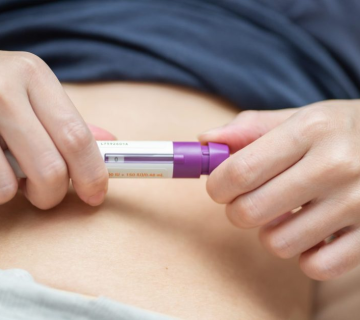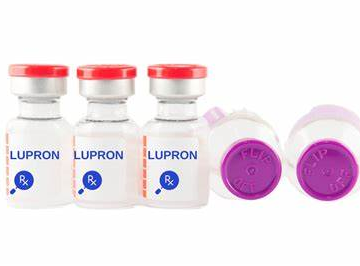
Blocked Fallopian Tubes Symptoms: Everything You Need to Know
Hey there! If you’ve landed here, you’re probably wondering about blocked fallopian tubes—what they are, what symptoms to look out for, and what you can do about them. Maybe you’re trying to get pregnant, or maybe you’ve just heard the term and want to learn more. Either way, you’re in the right place! Blocked fallopian tubes are a big deal for many women, especially when it comes to fertility, and yet they can be super sneaky because they don’t always shout, “Hey, I’m a problem!” In this article, we’re diving deep into the symptoms, causes, and practical steps you can take. Plus, I’ll share some fresh insights and the latest research to give you a fuller picture—stuff you won’t find everywhere else. Let’s get started!
What Are Blocked Fallopian Tubes Anyway?
Imagine your fallopian tubes as tiny highways connecting your ovaries to your uterus. Every month, an egg takes a road trip down one of these tubes, hoping to meet a sperm and start a pregnancy. But if there’s a roadblock—like scar tissue, fluid, or inflammation—the egg can’t get through, and neither can the sperm. That’s what a blocked fallopian tube is: an obstruction that stops this journey from happening smoothly.
Here’s the kicker: about 30% of women struggling to conceive have issues with their fallopian tubes. That’s a huge number! But here’s the tricky part—most of the time, blocked tubes don’t wave a big red flag with obvious symptoms. So, how do you know if this might be happening to you? Let’s break it down.
Common Symptoms of Blocked Fallopian Tubes
The Silent Trouble Maker
Most women with blocked fallopian tubes don’t feel a thing. Crazy, right? You could have a blockage and not even know it until you try to get pregnant and hit a wall. Doctors call this “asymptomatic,” which just means it’s quiet and sneaky. But for some women, there are signs—subtle or not-so-subtle clues that something’s up.
Pelvic or Belly Pain
Ever feel a weird ache in your lower belly or pelvis? For some women, blocked fallopian tubes cause mild to moderate pain. It might come and go, or it might stick around like an annoying guest. This pain can feel like:
-
- A dull ache on one side of your belly
-
- A sharp jab during your period
-
- A constant discomfort that’s hard to pin down
Why does this happen? Sometimes, a blockage traps fluid in the tube (called a hydrosalpinx), and that buildup presses on nearby tissues. Research shows this type of blockage can cause pain in about 1 in 5 women with tubal issues.
Practical Tip: Keep a pain diary. Write down when it happens, how bad it is (1-10 scale), and what you were doing. This can help your doctor spot patterns.
Painful Periods (Dysmenorrhea)
If your periods feel like a battle every month, it might be a hint. Blocked tubes can mess with the normal flow of things, adding pressure or inflammation that makes cramps worse. Studies suggest that women with tubal blockages report more intense period pain compared to those without.
Real-Life Example: Sarah, 29, always thought her killer cramps were normal—until she found out one of her tubes was blocked. “It was like my body was trying to tell me something,” she said.
✔️ Do: Track your period pain. Is it worse than your friends’ or family’s? Talk to a doctor if it’s disrupting your life. ❌ Don’t: Assume all period pain is “just part of being a woman.” It’s worth checking out.
Trouble Getting Pregnant
Here’s the big one: infertility. If you’ve been trying to conceive for a year (or 6 months if you’re over 35) without luck, blocked tubes could be the culprit. The egg and sperm can’t meet if the tube’s blocked, and if both tubes are out of commission, natural pregnancy becomes impossible without help.
Latest Data: A 2022 study found that tubal factor infertility accounts for 25-35% of female infertility cases worldwide. That’s millions of women!
Action Step: If you’re in this boat, ask your doctor about a test called a hysterosalpingogram (HSG). It’s an X-ray that checks if your tubes are open.
Pain During Sex
Sex shouldn’t hurt, but for some women with blocked tubes, it does. This pain (called dyspareunia) might feel deep in your pelvis and could be linked to inflammation or scar tissue around the tubes.
✔️ Do: Be honest with your partner and doctor if sex hurts. It’s a clue worth exploring. ❌ Don’t: Push through the pain—it’s your body asking for attention.
Unusual Vaginal Discharge
Sometimes, a blockage leads to fluid buildup that leaks out as strange discharge. It might be:
-
- Sticky or thick
-
- Yellowish or greenish
-
- Smelly (like something’s off)
This could signal an infection like pelvic inflammatory disease (PID), a common cause of blocked tubes.
Quick Tip: If your discharge looks or smells weird, see a doctor ASAP. Infections need fast treatment to avoid worse problems.
Sneaky Symptoms You Might Miss
Ectopic Pregnancy Risk
Here’s something scary but important: blocked tubes raise your risk of an ectopic pregnancy. That’s when a fertilized egg gets stuck in the tube instead of making it to the uterus. Symptoms include:
-
- Sharp pain on one side of your belly
-
- Vaginal bleeding that’s not your period
-
- Feeling dizzy or faint
Urgent Alert: An ectopic pregnancy is a medical emergency. If you have these signs plus a positive pregnancy test, call your doctor or head to the ER right away.
Fun Fact (Not Really Fun): About 1 in 20 women with a history of tubal issues face this risk, per a 2023 report from the American Society for Reproductive Medicine.
Irregular Periods or Spotting
Blocked tubes don’t directly control your cycle, but the inflammation or hormonal chaos tied to them can throw things off. You might notice:
-
- Spotting between periods
-
- Heavier or lighter bleeding than usual
Question to Ask Yourself: Has your period been acting funky lately? It’s worth mentioning to your doc.
Fatigue or Feeling “Off”
This one’s super vague, but some women report feeling unusually tired or just not themselves. It could be your body’s way of reacting to chronic inflammation from a blockage.
Science Bit: A small 2024 study suggested that low-grade inflammation from tubal issues might zap energy levels in some women. More research is needed, but it’s a cool clue!
What Causes Blocked Fallopian Tubes?
Okay, so you might have symptoms—but why do tubes get blocked in the first place? Let’s unpack the usual suspects.
Pelvic Inflammatory Disease (PID)
PID is the MVP of tube blockers. It’s an infection (often from STDs like chlamydia or gonorrhea) that spreads to your reproductive organs. Left untreated, it scars your tubes.
-
- Stat: PID causes up to 70% of tubal blockages, says the CDC.
-
- Prevention: Safe sex and quick treatment of infections are your best bets.
Endometriosis
This is when tissue like your uterine lining grows where it shouldn’t—like on your tubes. It can glue them shut or create blockages.
-
- Real Talk: 1 in 10 women have endometriosis, and it’s a top reason for tubal trouble.
Past Surgeries or Ectopic Pregnancies
Had surgery in your belly—like for an appendix or ectopic pregnancy? Scar tissue (adhesions) can form and block your tubes.
Example: Lisa, 34, had an ectopic pregnancy removed years ago. She didn’t know it left her tube blocked until she started trying for a baby.
Hydrosalpinx
This is when a tube fills with fluid and swells up, sealing itself off. It’s often tied to infections or endometriosis.
-
- New Research: A 2023 study found that hydrosalpinx doubles the risk of infertility compared to other blockages.
How Do Doctors Find Out If Your Tubes Are Blocked?
Wondering if this is your issue? Doctors have some cool tools to figure it out.
Hysterosalpingogram (HSG)
-
- What It Is: An X-ray where dye is squirted into your uterus. If it flows through your tubes, they’re open. If not, there’s a block.
-
- Pain Level: Mild cramping for most, but it’s quick (10-15 minutes).
-
- Cost: Around $200-$500 without insurance, depending on where you live.
Laparoscopy
-
- What It Is: A tiny camera goes into your belly through a small cut to peek at your tubes.
-
- When It’s Used: If HSG isn’t clear or you need surgery anyway.
-
- Pro: It can fix blockages on the spot sometimes!
Ultrasound (Sonohysterogram)
-
- What It Is: Sound waves check your tubes with saline pushed through your uterus.
-
- Why It’s Cool: No radiation, less invasive than HSG.
Step-by-Step Guide: What to Expect at an HSG
-
- You lie on a table under an X-ray machine.
-
- A speculum goes in (like a Pap smear).
-
- Dye gets injected—you might feel cramps.
-
- X-rays snap pics to see where the dye goes.
-
- You’re done! Rest a bit and watch for spotting.
Treatment Options: What Can You Do?
Good news—there are ways to tackle blocked tubes! Here’s what’s out there.
Surgery to Open Tubes
-
- How: Laparoscopy removes scar tissue or opens the blockage.
-
- Success: Works for 20-50% of women, depending on damage (2023 fertility journal).
-
- Downside: Not always permanent; tubes can re-block.
In Vitro Fertilization (IVF)
-
- How: Eggs are taken out, fertilized in a lab, and placed in your uterus—bypassing tubes entirely.
-
- Success: About 40% per cycle for women under 35, per 2024 data.
-
- Cost: $12,000-$15,000 per try, but insurance might help.
Natural Approaches (With Caution)
Some folks try herbs or massage, but there’s little solid proof they unblock tubes. A 2022 review found no strong evidence for these—talk to your doctor first!
✔️ Do: Explore legit options with a fertility specialist. ❌ Don’t: Waste time on unproven “miracle cures” online.
Unique Insights: What’s New in 2025?
Let’s get into some cutting-edge stuff that’s not in every article.
Inflammation’s Hidden Role
New research from February 2025 suggests that even tiny, ongoing inflammation (not just big infections) might slowly block tubes over time. Scientists are testing anti-inflammatory drugs to prevent this—stay tuned!
Tube Health Checkups
A 2024 pilot study floated the idea of routine tube checks for women with risk factors (like past STDs or endometriosis). It’s not standard yet, but could catch problems early.
Diet and Tubes Connection
Early data hints that diets high in antioxidants (think berries, nuts, spinach) might lower inflammation linked to blockages. No guarantees, but it’s a tasty idea to try!
Table: Foods to Boost Tube Health (Maybe!)
| Food | Why It Might Help | How to Add It |
|---|---|---|
| Blueberries | Antioxidants reduce inflammation | Toss in yogurt |
| Walnuts | Omega-3s fight scarring | Snack or salad topper |
| Spinach | Vitamin E supports tissue | Smoothies or sauté |
Practical Tips for You Right Now
Step 1: Listen to Your Body
-
- Notice any of these symptoms? Don’t brush them off. Write them down and call your doctor.
Step 2: Get Tested
-
- Ask for an HSG or ultrasound if you’re worried. It’s the only way to know for sure.
Step 3: Reduce Risks
-
- Use protection to avoid STDs.
-
- Treat infections fast—don’t wait.
-
- Manage endometriosis or PID with your doc.
Step 4: Plan Ahead
-
- If you want kids someday, talk to a fertility expert early. Freezing eggs might be an option if tubes are iffy.
Q&A: Your Top Questions Answered
-
- Q: Can blocked tubes fix themselves?
-
- A: Nope, not usually. Scar tissue or fluid needs medical help to clear.
-
- Q: Will I feel sick all the time?
-
- A: Not necessarily—many women feel fine until they try to conceive.
-
- Q: Is surgery my only shot?
-
- A: No way! IVF skips the tubes entirely and works for lots of folks.
Emotional Side of Blocked Tubes
Let’s be real—this can feel heavy. Struggling to get pregnant or dealing with mystery pain isn’t fun. You might feel:
-
- Frustrated: “Why me?”
-
- Sad: Seeing friends with babies can sting.
-
- Hopeful: Treatments do work for many!
Coping Tips:
-
- Talk to someone—a friend, therapist, or online group.
-
- Focus on what you can control, like seeing a doctor.
-
- Give yourself grace—this isn’t your fault.
Let’s Chat: What’s Your Story?
Thanks for sticking with me through this deep dive! Now, I want to hear from you:
-
- Have you noticed any of these symptoms?
-
- Are you dealing with blocked tubes or trying to figure it out?
-
- What’s one thing you learned here that surprised you?
Drop a comment below—I’ll reply! Or, if you’re shy, share this with someone who might need it. Let’s keep the conversation going and support each other. You’ve got this!




No comment